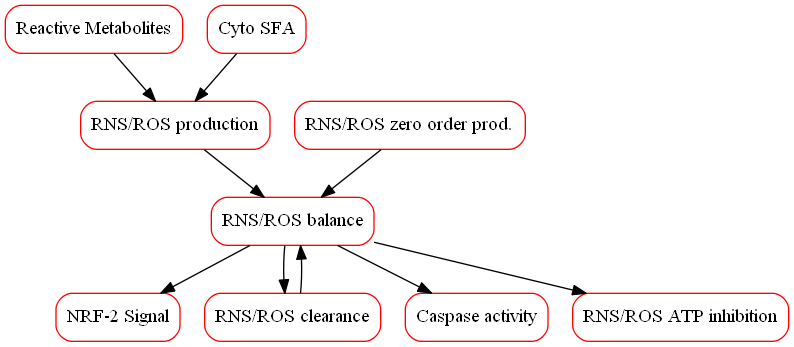Compounds and their stable or reactive metabolites can increase the production of reactive oxygen/nitrogen species (ROS/RNS) in hepatocytes via proposed mechanisms such as the reduction in cellular antioxidants or direct parent compound-mediated or reactive metabolite-mediated interactions. Modest increases in ROS/RNS can trigger activation of caspase enzymes, leading to caspase-mediated hepatocellular apoptosis. Greater increases in ROS/RNS can induce reductions in hepatocellular ATP, in turn disrupting other cellular processes (e.g. mitochondrial electron transport chain activity, bile acid transport) that can ultimately result in necrosis.
The balance of ROS/RNS within DILIsym is determined by the relative contributions of production and clearance. It has been demonstrated that compounds can either directly or via reactive metabolites elicit increases in the hepatocellular production of ROS and RNS, shifting the balance towards accumulation. One such example is acetaminophen, which perturbs ROS/RNS balance by increasing ROS production via a reactive metabolite. This interaction has been very well characterized in the literature, and it has been utilized to help characterize and confirm the quantitative interactions associated with hepatocellular damage due to ROS/RNS.
Within DILIsym, ROS/RNS can be generated in any zone of the liver and spread to adjacent zones, allowing for compounds such as acetaminophen to initially affect one zone and then progress into other zones.



